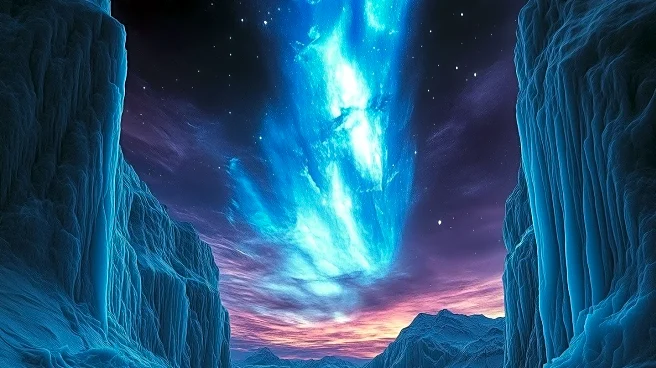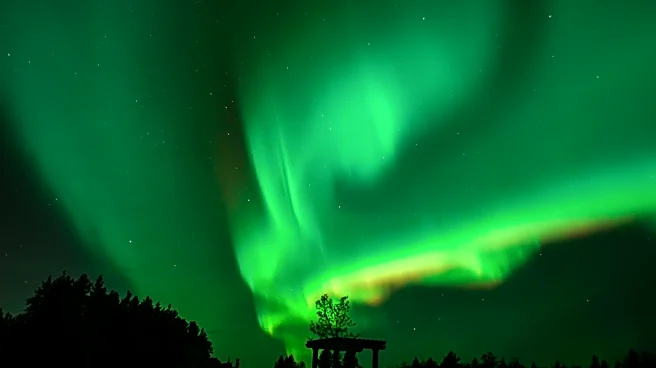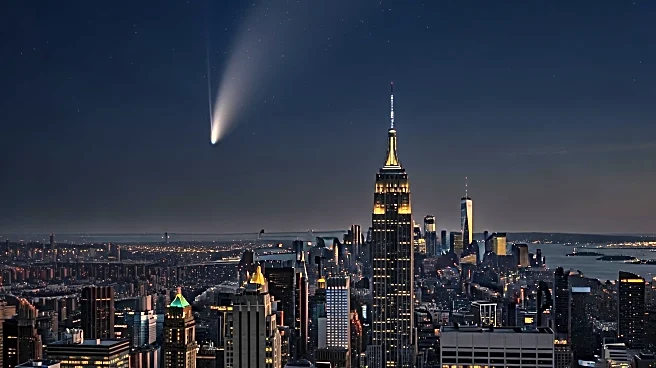What's Happening?
A series of solar storms are expected to hit Earth, potentially pushing the northern lights further south than usual, making them visible in New York. The NOAA Space Weather Prediction Center has issued
a G2 geomagnetic storm watch for October 16, with peak activity anticipated late Thursday night into early Friday morning. This rare opportunity for skywatchers in northern states, including New York, is driven by multiple coronal mass ejections (CMEs) from the sun earlier this week. These CMEs are arriving in quick succession, which could intensify Earth's magnetic field and enhance auroral activity. Forecasts suggest the geomagnetic activity will be strongest between 5 p.m. and 11 p.m., providing a potential spectacle for those in prime viewing areas with clear skies and minimal light pollution.
Why It's Important?
The potential visibility of the northern lights in New York is significant as it offers a rare natural phenomenon for residents and tourists alike. Typically, auroras are seen in higher latitudes, so their appearance in New York could attract interest from amateur astronomers and nature enthusiasts. This event underscores the impact of solar activity on Earth's magnetic field, highlighting the interconnectedness of space weather and terrestrial experiences. The occurrence may also serve as a reminder of the importance of monitoring space weather, which can affect satellite operations and communication systems.
What's Next?
If the conditions align, New Yorkers may witness a memorable auroral display. Observers are advised to find locations with clear skies and minimal light pollution for optimal viewing. The event could spark increased interest in astronomy and space weather phenomena, potentially leading to more public engagement with scientific communities. Additionally, continued monitoring of solar activity will be crucial to predict future occurrences and mitigate any potential disruptions to technology reliant on satellite communications.
Beyond the Headlines
The visibility of the northern lights in New York could have cultural implications, inspiring artistic and scientific exploration. It may also prompt discussions on the broader impacts of solar activity on Earth, including potential disruptions to power grids and communication networks. This event highlights the need for preparedness in managing the effects of geomagnetic storms, which can have far-reaching consequences beyond the immediate visual spectacle.












